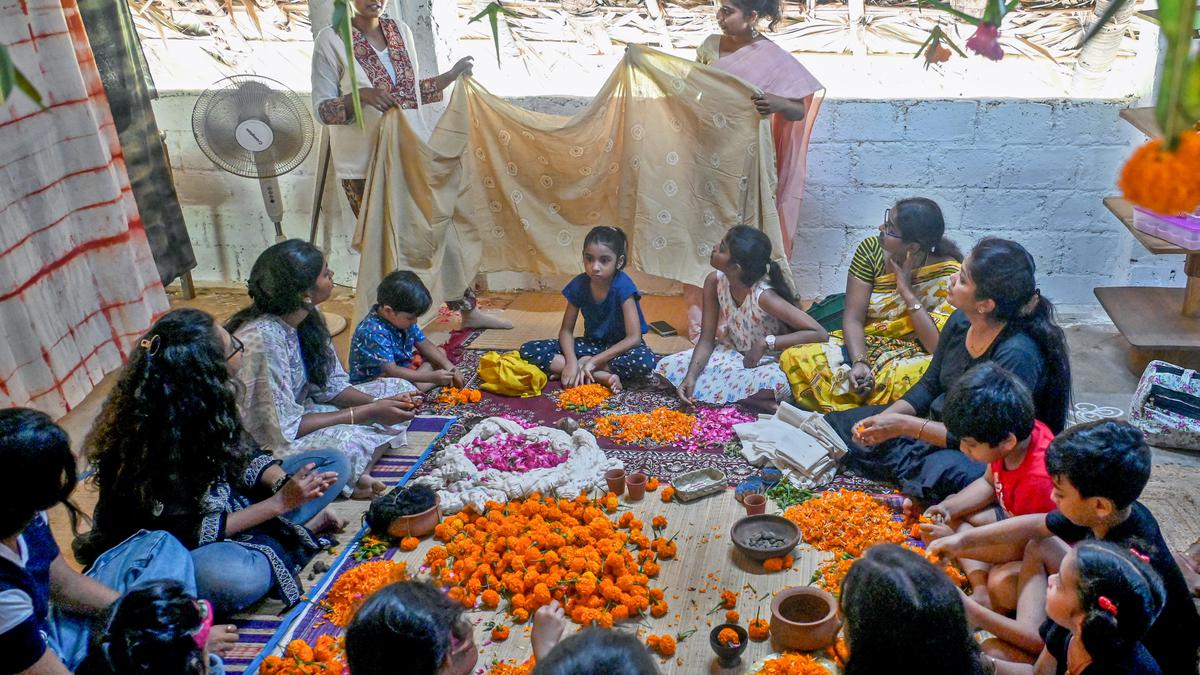
Make natural dyes from flowers and seeds at an experiential tour of Sankalpa Art Village in Visakhapatnam
The Hindu
The experiential tour to Sankalpa Art Village in Visakhapatnam encourages visitors to learn about tie and dye method, block printing methods and natural way of dye making
A sweet fragrance greets the senses as we step into Sankalpa Art Village (SAV) at Pedagadi, about 20 kilometres from Visakhapatnam. In a big room under a thatched roof, a group of people and children sort out heaps of marigold and roses, pulling out petals to make small floral batches of orange and pink. In another corner, some children use a wooden pestle to crush the petals on a small piece of fabric, making patterns with colour.
Master weaver Satyanarayana shows how to tightly wind threads in a criss-cross pattern on a folded fabric. “When the cloth is immersed in the dye pots, the tied segments will resist the dye while other areas will take on the hues,” he shares.
This is the second workshop this summer on tie and dye and natural dyeing technique at Sankalpa Art Village in the suburbs of Visakhapatnam.
Over the past few years, the Art Village has made a name for itself among followers of sustainable living for its handloom, naturally dyed clothing and natural lacquered wooden toys and farm to table organic produce.. Their production unit at this centre at Pedagadi was established nearly 20 years ago. But for the first time, SAV has opened its doors to offer workshops on natural dyes, block printing and weaving. At the production unit, a team of 25 master weavers and artisans work on handloom textiles for catering to domestic and export orders, mostly to European countries and the USA.
Outside the main unit of SAV, under the shade of a mango tree, creative design head Jameelya Akula bends over pots of bubbling dyes. Petals of marigold lie scattered about, as she dunks swatch after swatch into the pots, her fingertips turning shades of red and brown in the process. In a few minutes time, the fabric will come out of the pot bathed in hues of marigold.
“A huge amount of chemicals goes into the making of the regular dyes and leaves behind massive proportions of carbon emission. Nature had been generous with its colours. In the ancient times, colours on textiles were chiefly from natural dyes. In the 1850s, synthetic dyes came into existence, changing the course of the textile industry. People who worked with chemical dyes suffered health issues,” says Jameelya. In the recent years, there has been a gradual shift in the mindset of people and a growing number are willing to make the complete shift towards sustainable living and learn about natural dyes.
Growing up surrounded by plants and nurseries nurtured by her parents, Jameelya has always found calm in Nature and its hues.













